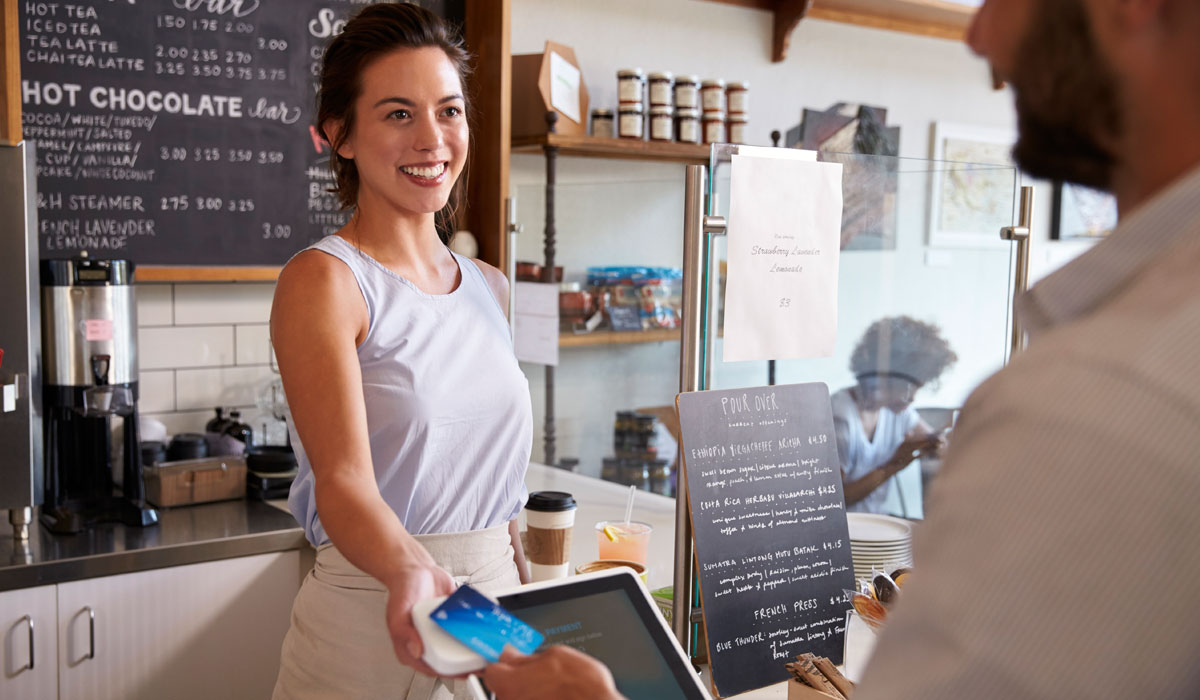Technology has increasingly become a more vital part of every restaurant—from POS systems that track in-store sales, to kiosks and tablets that make the ordering process easier and to digital menu boards with real-time menu-item and pricing updates. Despite all of these advancements, operators must still go further by continuing to implement technology that not only drives ROI but enhances service and uniquely “wows” today’s and tomorrow’s ever-changing consumer.
In both quick-service and fast-casual environments, customers are there to enjoy a fast and convenient meal. While they aren’t necessarily looking for extensive staff interaction or suggestions, this does not mean that friendly service and execution are not any less important. Across the quick-service space, the most notable differentiator in this respect has been Chick-fil-A, where customer service has been a significant piece of what sets the brand apart from the quick-service homogeny by doing simple little things like saying “my pleasure” instead of “you’re welcome” or carrying each tray of food over to the guests’ table instead of making them get up to grab it. This ‘customer serving’ mentality/culture has become the gold standard among peers. By both aggressively embracing technology and highlighting that unique human service touch, guests’ loyalty for Chick-fil-A have delivered best in class unit-level economics with massive sales volumes and notably high restaurant-level operating margins.
In most grab-and-go environments, customer service essentially ends at the counter and the guest is left to pick up their food, fill their drink, and choose a table. But, what if they want another order of curly fries? What if they want to top their meal off with a strawberry milkshake? They are forced to grab all of their belongings, get back in line, re-order, wait for it to be prepped and then sit down again. Likely, by the time they think through this entire process, they have decided not to place that incremental order. This is an especially negative dynamic for impulse purchases like desserts, where minutes determine if the transaction actually happens.
As such, operators are losing out on revenues, in both a direct and indirect sense. Directly, in that the second purchase is not easy to make from the customer’s standpoint. Indirectly, given that most quick-service and fast-casual operators are capacity constrained at the busiest dayparts. So if a lower-dollar reorder customer gets in line, a higher-dollar customer passing by might decide to skip the line and go somewhere less crowded.
But just think, what would happen if the customer could simply order more once they sat down. By creating an additional engagement opportunity, the customer could place an order through guest-facing technology at their table, and while they are finishing up their burger and fries, the strawberry shake they wanted at the end of the meal would be ready to go. The customer has now made another purchase that they would not have otherwise not made, solely because of the convenience of it. So with technology and by leveraging existing labor (as Chick-fil-A so effectively does) the owner has increased revenue per square foot by utilizing the entire restaurant (beyond just around the register) and also increased traffic capacity.
Most quick-service and fast-casual operators have built their service model and store environment around the premise the customer is in and out, ordering only once during their time in the restaurant. But over the past 15 years, as quick-service and fast-casual menu offerings have improved and some consumers have traded down and out of casual dining/bar & grill, limited-service operators are increasingly realizing much more sales opportunity exists beyond just the square footage of the register.
By adding in that second layer of technology and leveraging already existing labor, which allows guests to more easily make an incremental purchase, we see a dramatic new opportunity for both customer service and asset ROI. It’s time to reinforce the “service” aspect of quick service by utilizing your team and technology to the fullest extent. More curly fries please.






